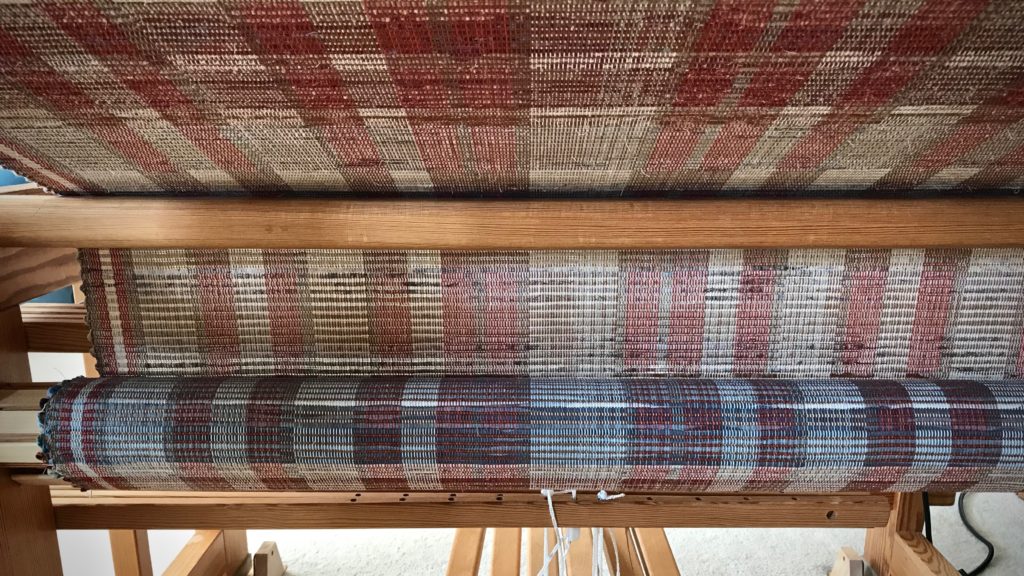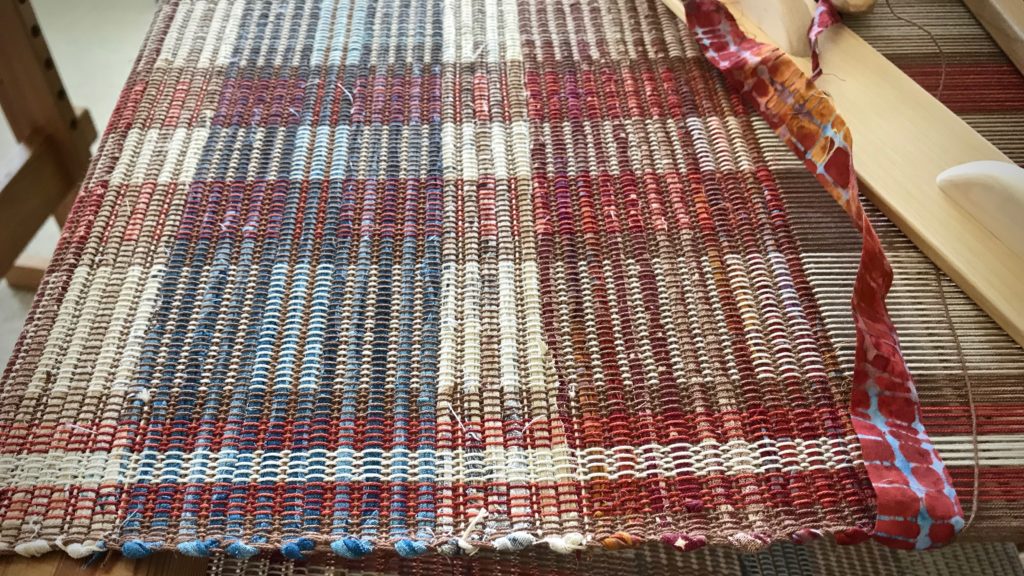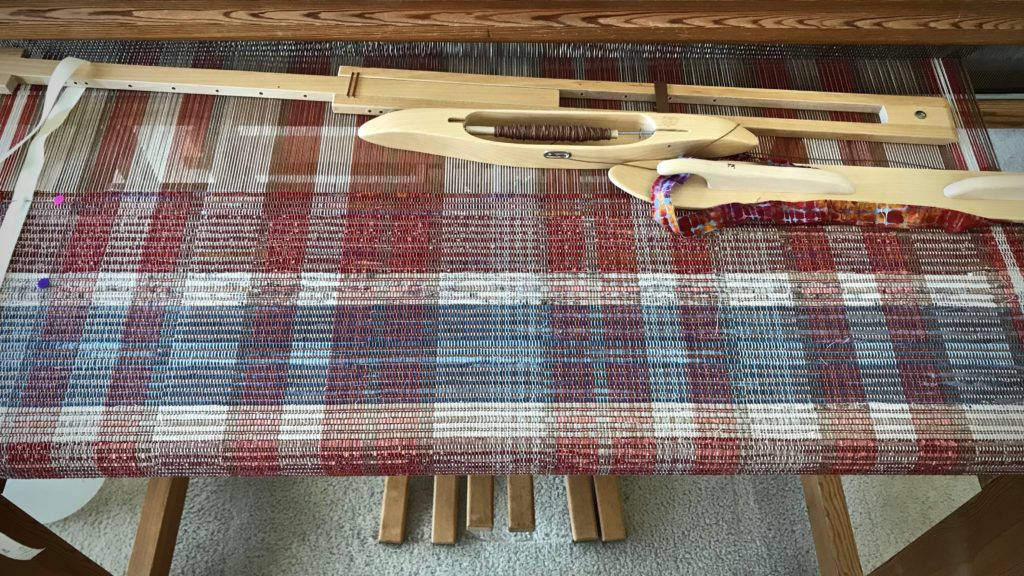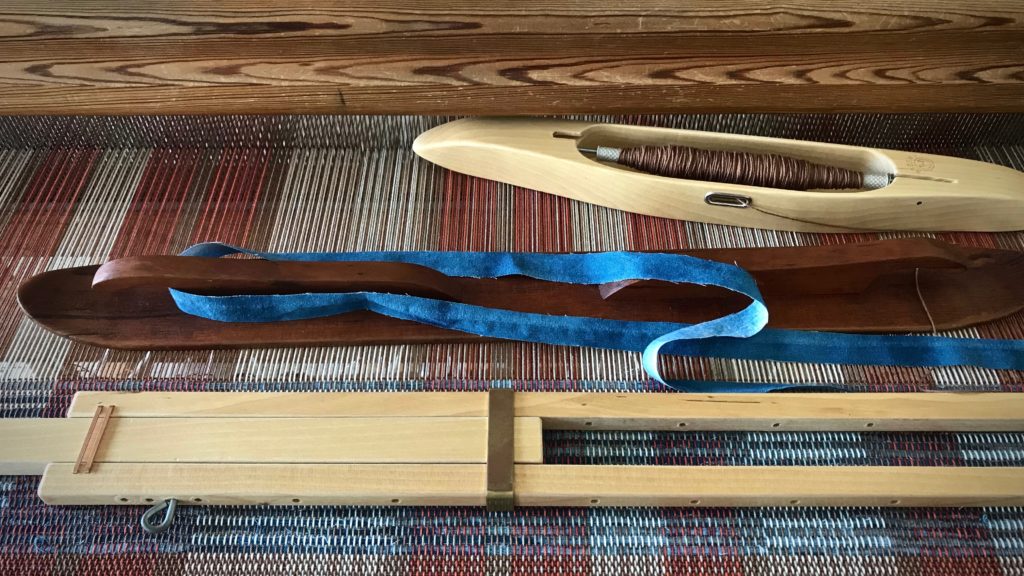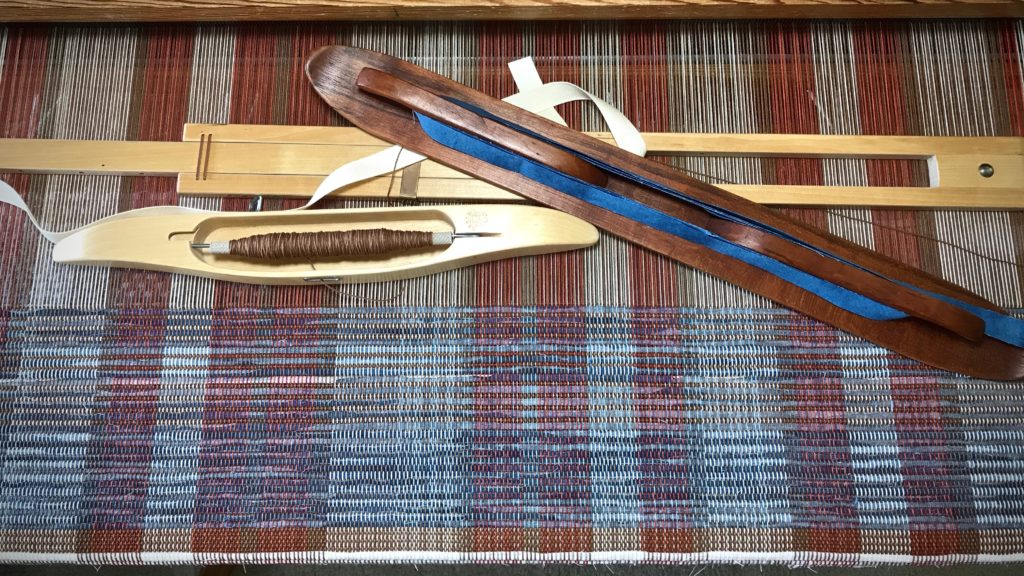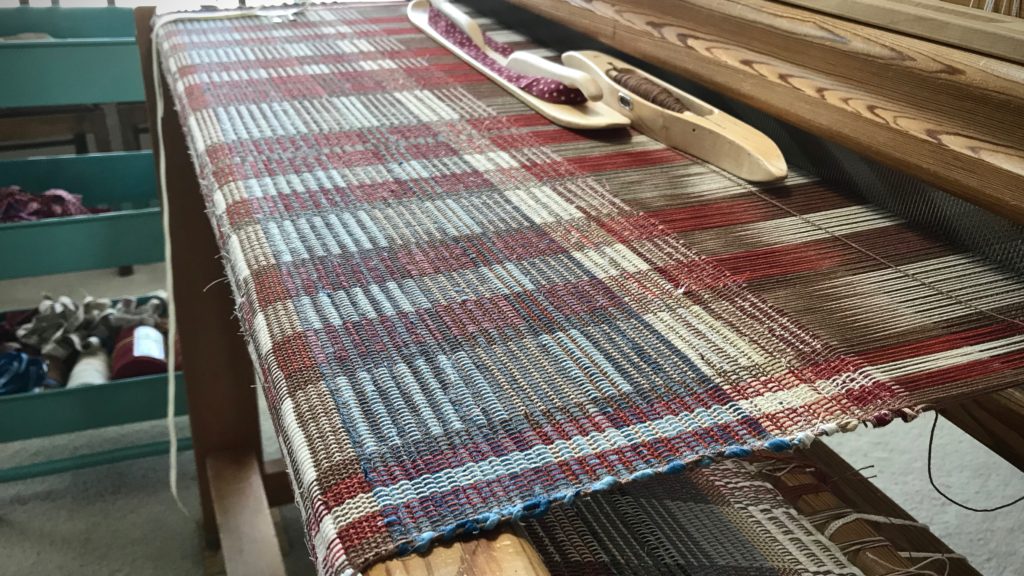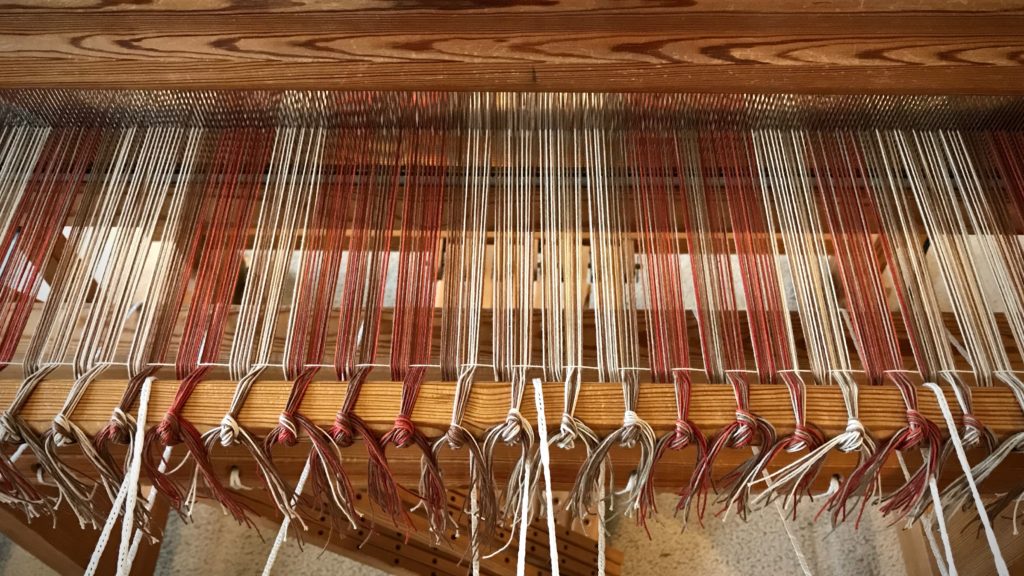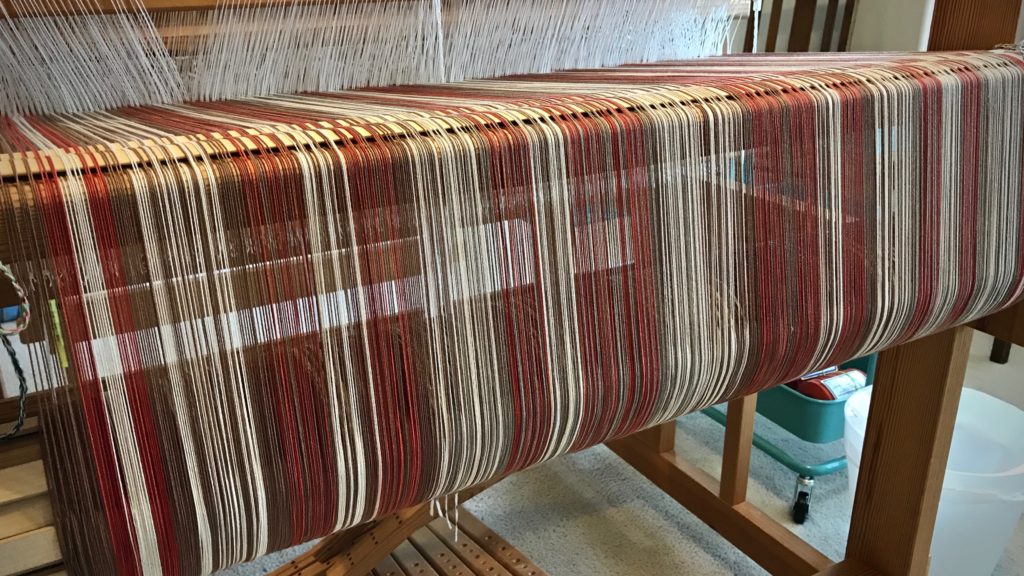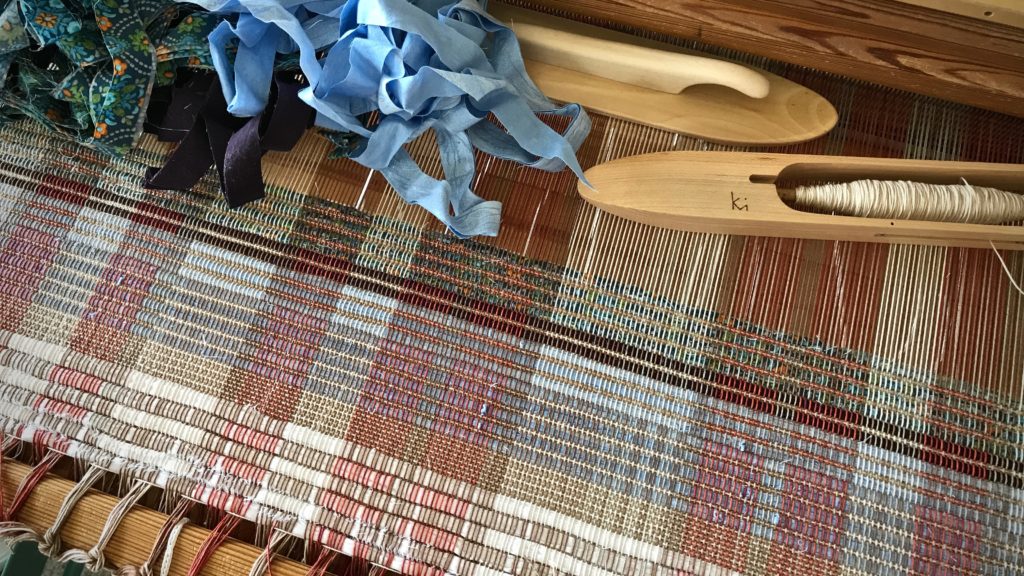I enjoy making it up as I go—changing blocks and switching colors. That’s what I did for the first quarter of this long rug. Then, I made notes of what I did so I could reverse the pattern to the middle of the rug. The entire sequence, then, is repeated for the second half. And now, there are only six more inches to weave on this autumn-toned rug.
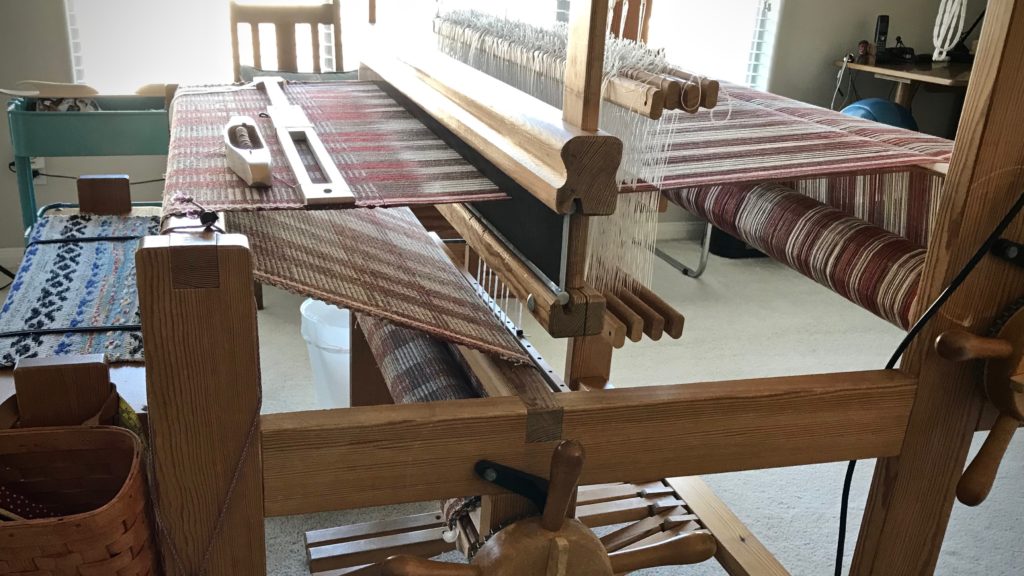
Because of experience I gained by weaving towels with thick and thin threads, I am quite comfortable designing this rug on the loom. Fabric strips and rug warp = thick and thin. I understand it. On the other hand, for every weaving concept I understand, I realize how much more I don’t know at all. Who can be good at it all?
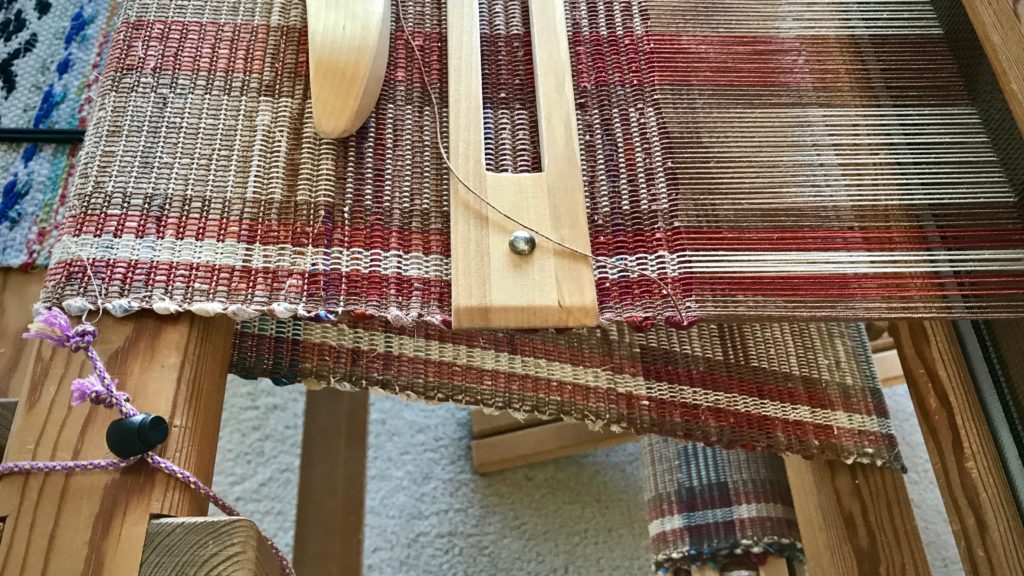
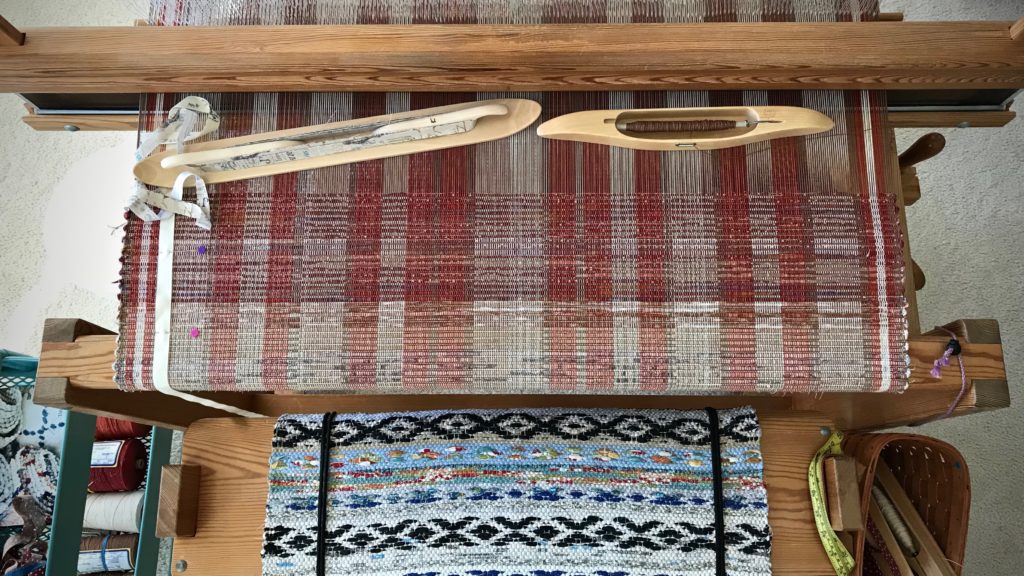
I am pretty good at being “good.” But I’m far from perfect. We know that Jesus went about doing good and helping people. So, yes, we can follow his example. But there’s a problem. Being good is not good enough. Our good will never reach perfection. Fortunately, Jesus gave us more than a good example. He gave his life so that we could receive forgiveness for everything in us that is not good. And that is what we call good news!
May your cloth beam fill up with woven goods.
Happy weaving,
Karen

